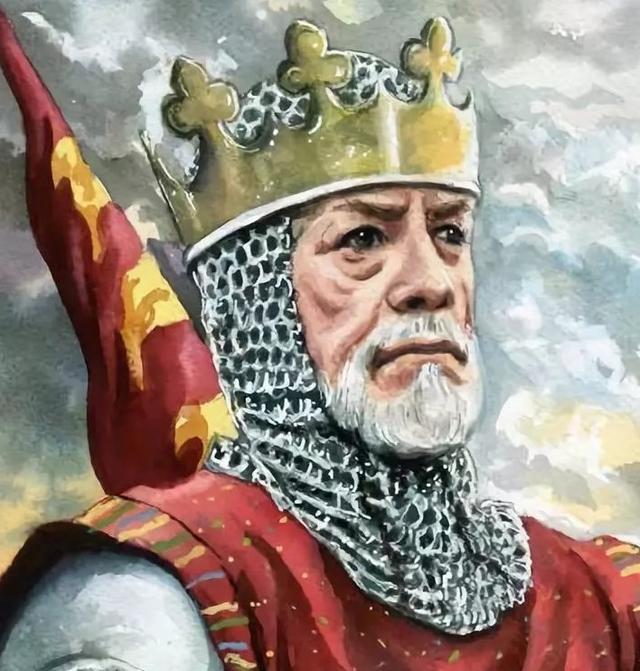In the history of ancient Europe, kings and nobles had a variety of nicknames, among which the taller ones were William the Conqueror, Richard the Lionheart, and Louis XIV, the Sun King. But for the common people of Europe, they did not give their king some tall nicknames, they often gave the king nicknames based on his appearance or stature, such as Charles II the bald and Louis VI the Fat, and the protagonist of this article, Edward I with long legs.

Edward I was born in 1239 AD at the Palace of Westminster in London, the father of Henry III, the fourth monarch of the Plantagenet dynasty in England, and the mother of Eleanor, a Nobleman of Provence. In 1272, Edward I's father, Henry III, died, and Edward I, who was thirty-three years old, became the new king, during the reign of Edward I, he led LinkedIn army to conquer Wales, and later suppressed the Scottish uprising, and ordered the execution of The Scottish national hero William Wallace.
It was because of the suppression of the Scots that Edward I was given the title of "Hammer of Scotland", but most of the English still called him Edward the Long-legged, and from this nickname alone, it can be known that Edward I was a very tall king. However, as for how tall Edward I was at that time, the ancient Chronicles of England do not record in detail, people only know that his legs are very long, and he stands out from the crowd.
In killing William. After Wallace, Edward I thought the Scots would submit, so he returned to London with his army and wanted to recuperate in the palace for a while. However, soon after Edward I returned to London, the Scots, under the leadership of Robert, launched another uprising against the English, so Edward I sent troops to suppress it, although the British army was victorious on the battlefield, but it was never able to completely eliminate Robert's army, these Scots hid in the mountains and jungles, often attacking the fallen British soldiers.
In order to completely solve the Scottish army, Edward I, who was nearly seventy years old, decided to march in person, and he led his army in the summer of 1307, but when he marched to the Scottish border, Edward I fell ill with malaria. Edward I, who knew that his time was short, made two requests to his men before his death, the first of which was to ask the soldiers to take their two bones to fight the Scots, and the English king was disappointed that he could not suppress the Scots again before his death.
Another request of Edward I was to have his men dig out his heart and then give it to the crusaders, who took Edward I's heart to the holy city of Jerusalem, thus breaking Edward I's last wish for the failure to recover Jerusalem. As for whether Edward I's men fulfilled the king's request before his death, the history books do not detail it, but by July 6, Edward I died of worsening his condition, his body was buried in Westminster Abbey, and a mausoleum was built for him out of pure black marble.
In 1774, 467 years after Edward I's death, scholars from the London Antiquities Society came to Westminster Abbey and, with the permission of the locals, decided to open Edward I's mausoleum to find out.
After opening Edward I's black sarcophagus, archaeologists found the remains of Edward I, due to the backward technology at that time, the archaeologists did not conduct a detailed study of Edward I's remains, and they opened the graveyard of the sarcophagus to see how tall the tomb owner known as the long-legged Edward was.
Later, according to archaeologists, Edward I's bones alone were 6 feet 2 inches (1.88 meters) long, and it was inferred that Edward I's height in his youth may have exceeded one meter nine. Even if it is 1.88 meters tall, it is tall in modern society, not to mention the Middle Ages where Edward I lived. After completing the measurement of the remains of Edward I, scholars lamented: "The records in the history books are not deceitful, it seems that this long-legged king is indeed worthy of the name, and his height was undoubtedly very rare in the Middle Ages." ”